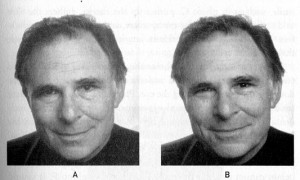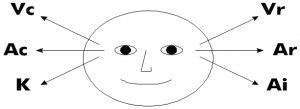Spotting Liars for Skill for Interveiwers
We have had such a good response from the recent article How to read micro facial expressions with people wanting to learn more about spotting liars, that we have written a follow-up article to teach you how to spot liars.
WARNING: Before going any further and learning how to really know if someone is lying to you, you first need to ask yourself – do I really want to know? Remember sometimes ignorance is bliss and knowing that someone is lying to you can HURT you.
The techniques you are about to learn are powerful and are used in specialist industries such as: police force, security experts, M15, immigration officials and with CEO’s in multi-million-pound business deals
Lie to Me – The Basics
As mention in the last article, how to read micro facial expressions, when reading people you need to look for clusters and don’t make opinions on just one expression or body movement.
Body language – when being truthful people will use a wide range of hand expressions and movements as people often talk with their hands. Liars will unconsciously limit their arm movements looking stiffer than natural
Touching Lips – when lying we unconsciously try and stop the lie from coming out by covering our mouths, liars will also touch their nose or ear when lying.
Red Faced – liars tend to get hot “hot under the collar” is a common phrase used. Liars can become red-faced or may play with their collar to cool down, others will scratch their neck when lying – remember look for clusters
Moving Away – liars will often feel uncomfortable lying to your face and will unconsciously turn their body away from yours wanting to get away quickly
Micro Expressions – liars will give away their lie through micro-expressions (for full details click the link above) when faking an emotion the expression is often limited – look at these two pictures of the man smiling:
Which one is faking?
The picture on the right is a true smile, the secret here is the crow’s feet on the eyes- to learn more about facial expressions click the above links or read this book by the expert in facial expressions Paul Ekman (above) – CLICK IMAGE
Reading People
Timing – often a liar will say something and then follow this up with an emotion or gesture, while truthful people will say something and make the gesture at the same time. Check this at Christmas when people are opening their presents they will say “I love it” and then make a smile – a sign that they don’t truly “love it”
Out of Time – Gestures are often off pace when lying, emotional displays are delayed and then suddenly stop
Defensive – a guilty person will often get defensive in conversation, whereas innocent people often become offensive
Building Barriers – Liars will often want to hide away from you, protecting them and will build barriers between you and them; this could be sitting on a chair the wrong way round so the back of the chair is a barrier between you and them. They also use a book or other object and hold this in front of them.
Hearing Lies
Copy Cat – liars will often copy the exact words you use to answer a question “did you steal the spare change?” Liar: “No, I did not steal the spare change”
Sticking to the Facts – truthful people will often tell a story and as the story is progressing will naturally go off on a tangent, liars will tell a “well-planned story” in a more factual way with any additional “add-ons”
Not Answering the Question – many people don’t like to lie, and instead of lying will answer a different question or just imply an answer
Difficult Silences – Liars will often want to fill silences
Distancing Language – liars will often use distancing language, with Bill Clinton famously saying “I did not have sex with that women”
rather than saying her name, he distanced himself using the word “that” to avoid thinking about the person/situation.
Eye Accessing Cues
When asking a person a question you can watch the person’s eye movements to detect if the person is accessing an emotion or remembering or constructing a sound or image.
To practice this, ask a friend the questions below and check their eye movement against the chart (for some the eye accessing cues will be opposite) When questioning a liar, you can ask the person several truths to gain a baseline and then ask them a question to see if they are lying (accessing constructed images)
Remember as we all detecting lie techniques you must look for clusters.
Looking Up and to the right-Visual Remembered
What is the colour of the shirt you wore yesterday?
Which of your friends has the shortest hair?
Looking up and to the left-Visual Constructed
What would your room look like if it were painted yellow with big purple
circles?
Can you imagine the top half of a tiger on the bottom half of an elephant?
Looking to the Right (towards ears) -Auditory Remembered
What does your best friend’s voice sound like?
Which is louder, your doorbell or your telephone?
Looking to the Left (towards ears) – Auditory Constructed
What will your voice sound like in 10 years?
What would it sound like if you played your two favorite pieces of music at the same time?
Looking down to the Right – Auditory Digital
What is something you continually tell yourself?
What are your thoughts about this article?
Looking Down to the Left-Kinaesthetic
What does it feel like to walk barefoot on a cool sandy beach?
What does it feel like when you rub your fingers on sandpaper?




A spimle and intelligent point, well made. Thanks!
Your image is confusing. If I’m looking at the face the right and left is the wrong way around. VR would be on the left if I’m looking at the face directly. Or are we talking my own face? Which, if that is the case, I wouldn’t be trying to read my own. Maybe it should be ammended? It really is confusing reading VR on the left.
Hi, the VAK image is as it would be if you were looking at someone. Is the person you look at, looks up and to the Left they are generally (but this depends on the person) constructing an image. If they look up and to the right they are generally remembering and image. Hope this helps.